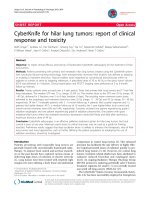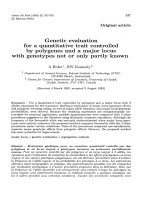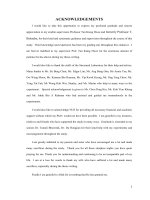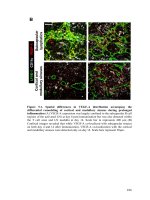Seismic response and damage evaluation for anchored and unanchored cylindrical above ground steel tanks
Bạn đang xem bản rút gọn của tài liệu. Xem và tải ngay bản đầy đủ của tài liệu tại đây (789.2 KB, 6 trang )
30
Phan Hoang Nam, Nguyen Hoang Vinh, Hoang Phuong Hoa
SEISMIC RESPONSE AND DAMAGE EVALUATION FOR ANCHORED AND
UNANCHORED CYLINDRICAL ABOVE GROUND STEEL TANKS
Phan Hoang Nam*, Nguyen Hoang Vinh, Hoang Phuong Hoa
The University of Danang – University of Science and Technology
*Corresponding author:
(Received: September 05, 2022; Accepted: October 04, 2022)
Abstract - This paper aims to first present a review of studies on
numerical modeling and seismic response analysis of above
ground steel liquid storage tanks. On that basis, a procedure for
estimating dynamic parameters associated with simplified models
for anchored and unanchored conditions together with calculation
methods of seismic responses and damage states of tanks are
presented. In which, the nonlinear behavior of the bottom plate in
the case of unanchored conditions caused by sliding and uplift
phenomena is properly modeled based on the nonlinear static
pushover analysis on a 3D finite element model. Finally, an
example of the numerical modeling and seismic response analysis
of a water tank is presented. The seismic responses and damage
of both anchored and unanchored conditions are compared and
evaluated in detail.
Key words - Steel liquid storage tanks; seismic response; springmass model; tank-liquid interaction; failure mode
1. Introduction
Above ground steel liquid storage tanks have been
commonly constructed in industrial plants, especially
petrochemical plants for the storage of chemical
substances. Past earthquake damage in industrial zones
revealed that storage tanks are often severely damaged
resulting in the release of toxic and inflammable
substances, which could spread damage to the surrounding
area [1, 2].
Studies on the seismic response of storage tanks have
been concentrated since the 50s of the 20th century. The
earliest study was by Jacobsen [3], who analyzed
hydrodynamic pressures on rigid tanks with an anchored
support condition subjected to horizontal motion. In his
work, the motion of an incompressible fluid is represented
by the Laplace equation. Housner [4] used an approximate
simplification method in which the total hydrodynamic
pressure is decomposed into convective and impulsive
parts. Veletsos and Yang [5] used an alternative approach
to develop a similar mechanical model for rigid circular
tanks. They found that the pressure distribution due to fluid
movement for rigid and flexible anchored tanks was
similar; however, the magnitude is highly dependent on the
wall flexibility. Haroun and Housner [6] developed a
reliable method to analyze the dynamic behavior of
deformable cylindrical tanks, based on a finite element
model of a fluid-tank system. Veletsos [7] improved
Housner's mechanical analog to account for the effect of
the flexibility of the shell plate. Furthermore, the dynamic
response of a cylindrical tank subjected to the base motion
was analyzed by Veletsos and Tang [8]. Fische and
Rammerstorfer [9] presented an analytical procedure that
allows one to unambiguously investigate the effect of wall
deformations on both liquid pressure and surface elevation
for typical wall deformation shapes. Malhotra et al. [10]
simplified Veletsos' flexible tank model; the procedure was
later adopted in Eurocode 8 [11].
For practical and economic reasons, many liquid
storage tanks have been built directly on compacted soil
without anchoring. The behavior of unanchored tanks is
significantly different from that of anchored tanks.
Malhotra and Veletsos [12, 13] investigated the uplift
behavior of the bottom plate of unanchored tanks, where
the bottom plate is idealized as semi-infinite prismatic
beams on a rigid foundation subjected to a uniform load.
Since the finite element method (FEM) has become a
useful tool and widely adopted in many fields of
engineering; it can be applied to numerically analyze the
tank-liquid system and their interaction. However, due to
the complex nonlinear behavior of liquid storage tanks,
modeling this system is a very challenging task. Barton and
Parker [14] first studied the seismic response of liquidfilled cylindrical tanks using the FEM implemented in
ANSYS software. Both the concepts of added mass and
fluid finite elements are used to consider hydrodynamic
effects. Virella et al. [15] presented buckling analyses of
anchored steel tanks subjected to horizontal seismic
excitations using nonlinear three-dimensional finite
element models. An additional mass is attached to the
nodes of the shell element by spring elements. Ozdemir et
al. [16] presented a nonlinear fluid-structure interaction
method for seismic analysis of anchored and unanchored
tanks. In their models, the Arbitrary Lagrangian-Eulerian
(ALE) method is adopted to model the fluid-structure
interface, and the fluid motion is governed by the NavierStokes equations. Recently, a nonlinear static pushover
analysis of unanchored steel liquid tanks was proposed by
Vathi and Karamanos [17], where the distribution of
hydrodynamic pressures on the shell plate is calculated and
applied to the steel tank model by a loading subroutine in
ABAQUS software. Phan et al [18, 19] proposed full
nonlinear finite element models of an unanchored tank
using ABAQUS software, using both Arbitrary
Lagrangian-Eulerian and Structural Acoustic Simulation
methods. The results of their analyses are in good
agreement with the experimental data and demonstrated
the suitability of both models. The above-mentioned
models are basically based on a full finite element model
of the tank-liquid system. Although they can provide
accurate simulation results but will consume more
computational cost, especially in the case of probabilistic
and reliability analyses.
ISSN 1859-1531 - THE UNIVERSITY OF DANANG - JOURNAL OF SCIENCE AND TECHNOLOGY, VOL. 20, NO. 12.1, 2022
This paper focuses on the numerical modeling
approach, seismic response, and damage analyses of
cylindrical above ground steel liquid storage tanks. In this
regard, possible numerical modeling approaches for
anchored and unanchored steel liquid storage tanks are first
presented. Attention is paid to the simplified model of the
tank-liquid system, which is suitable for probabilistic and
reliability analyses. While the model for anchored tanks is
based on the proposal of Malhotra et al. [10] and Eurocode
8 [11], an enhanced model is proposed for unanchored
tanks. This model is improved based on the model of
Malhotra and Velesos [13], in which the overturning
moment-rotation relationship of the bottom plate is
determined precisely from the nonlinear static analysis of
the 3D finite element model. Based on the analysis for a
specific cylindrical steel tank, different seismic responses
of the tank with and without anchorage are presented.
Accordingly, limit states for failure modes are also
calculated and evaluated with the obtained seismic
responses.
2. Numerical model of above ground tanks
2.1. Anchored tank model
A possible numerical model for the anchored tank
represented by two viscoelastic oscillators is shown in
Figure 1, where the impulsive and convective masses (𝑚𝑖
and 𝑚𝑐 ) are lumped on cantilever tips with stiffness (𝑘𝑖 and
𝑘𝑐 ) and damping coefficients (𝑐𝑖 and 𝑐𝑐 ). For each
cantilever, the calculations of mass, length, and natural
period can be obtained by the simplified method of
Malhotra et al. [10]. Considering a ground motion, the
impulsive and convective responses are calculated
independently and can be combined using the absolutesum rule. This procedure has also been adopted in
Eurocode 8 [11].
M'
mc
𝑘𝑐 = 𝜔𝑐2 𝑚𝑐 and 𝑐𝑐 = 2𝜉𝑐 𝑚𝑐 𝜔𝑐
(4)
with 𝜔𝑐 = 2𝜋/𝑇𝑐
where 𝜔𝑖 and 𝜔𝑐 are the angular frequencies of the
impulsive and convective vibrations, respectively.
Since the acceleration responses of the impulsive and
convective components are obtained, they can be combined
by taking the numerical sum, and the total base shear, the
moments above and below the bottom plate are given as
𝑄 = (𝑚𝑖 + 𝑚𝑤 + 𝑚𝑟 ) × 𝐴𝑖 + 𝑚𝑐 𝐴𝑐
(5)
(𝑚
)
𝑀=
(6)
𝑖 ℎ𝑖 + 𝑚𝑤 ℎ𝑤 + 𝑚𝑟 ℎ𝑟 × 𝐴𝑖 + 𝑚𝑐 ℎ𝑐 𝐴𝑐
𝑀′ = (𝑚𝑖 ℎ𝑖′ + 𝑚𝑤 ℎ𝑤 + 𝑚𝑟 ℎ𝑟 ) × 𝐴𝑖 + 𝑚𝑐 ℎ𝑐′ 𝐴𝑐 , (7)
where 𝑚𝑤 , 𝑚𝑟 are the shell plate and roof masses, ℎ𝑖 (ℎ𝑖′ )
and ℎ𝑐 (ℎ𝑐′ ) are the heights of the impulsive and convective
hydrodynamic pressure centroids, ℎ𝑤 and ℎ𝑟 are the
heights of the shell plate and roof gravity centers, 𝐴𝑖 and
are 𝐴𝑐 are the impulsive and convective acceleration
responses.
2.2. Unanchored tank model
In many cases, tanks can be constructed without
anchorages, namely unanchored or self-anchored tanks.
when these tanks are subjected to strong seismic
excitations, the partial uplift and sliding of the bottom plate
occur. Hence, the seismic response of the tanks is highly
influenced by these phenomena.
A simplified model of unanchored tanks was proposed
by Malhotra and Veletsos [13]. The uplift mechanism of
the tanks is simulated by a rotation spring that represents
the rocking resistance of the base, as shown in Figure 2. In
this model, the masses of the shell plate, 𝑚𝑤 , and tank roof,
𝑚𝑟 , are lumped with the impulsive mass. The total
impulsive mass, 𝑚 = 𝑚𝑖 + 𝑚𝑤 + 𝑚𝑟 , is lumped on the
cantilever tip with the equivalent length, ℎ′ = (𝑚𝑖 ℎ𝑖′ +
𝑚𝑤 ℎ𝑤 + 𝑚𝑟 ℎ𝑟 )/𝑚, the stiffness, 𝑘 = 2𝑖 𝑚, and the
damping coefficient, 𝑐 = 2𝑖 𝑚𝑖 .
mc
kc, cc
Figure 1. Spring-mass model for the anchored tank
L
The natural periods of impulsive and convective
vibrations (𝑇𝑖 and 𝑇𝑐 ) are calculated as
𝑇𝑖 = 𝐶𝑖
𝐻√𝜌
√𝑡𝑒𝑞 /𝑅×√𝐸
,
(1)
(2)
𝑇𝑐 = 𝐶𝑐 √𝑅,
where 𝐻 is the height of the liquid, 𝜌 is the liquid density,
𝑡𝑒𝑞 is the equivalent thickness of the shell plate, 𝐸 is the
modulus of elasticity of the steel tank, and 𝐶𝑖 and 𝐶𝑐 are the
coefficients which can be obtained from Malhotra et al. [10].
The corresponding stiffness and damping coefficient of
each response are:
𝑘𝑖 = 𝜔𝑖2 𝑚𝑐 and 𝑐𝑖 = 2𝜉𝑖 𝑚𝑖 𝜔𝑖
with 𝜔𝑖 = 2𝜋/𝑇𝑖
(3)
y
x
2R
k, c uplift
sliding
MOT
w
w
2R
2R
mi
h'
H
x
h'c
Ht
ki, ci
h'i
H
MOT
mi
h'c
Ht
kc, cc
y
31
2R
Figure 2. Spring-mass model for the unanchored tank
To accurately obtain the rotation spring behavior
(𝑀𝑂𝑇 - 𝜓 nonlinear relationship) for the uplift model and
the friction behavior for the sliding model, a static
pushover analysis procedure for the tank system is
presented in this study. The analysis is based on a threedimensional finite element model of the steel tank using
the ABAQUS software, where both geometric and material
nonlinearities are considered [19]. For example, Figure
3(a) shows the finite element modeling of an unanchored
tank, where the shell and bottom plates are modeled using
shell elements, while solid elements are used to model the
base slab. Due to the geometric symmetry, only half of the
tank is modeled.
32
Phan Hoang Nam, Nguyen Hoang Vinh, Hoang Phuong Hoa
hydrostatic hoop stress (𝜎ℎ𝑠 ) and the hoop hydrodynamic
stresses, given as
𝜎ℎ = 𝜎ℎ𝑠 + 𝜎ℎ𝑖 + 𝜎ℎ𝑐 .
(8)
For anchored tanks, the meridional stress, i.e., 𝜎𝑧 in
Figure 4, is associated with the axial force, 𝑁, per unit
circumferential length, given as
𝑁
𝜎𝑧 = .
(9)
𝑡𝑠
The axial forces per unit circumferential length on the
compressive and tensile sides are given as
𝑁=∓
(a)
1.273𝑀
𝐷2
− 𝑤𝑡 ,
(10)
where 𝑀 is the moment above the bottom plate and 𝑤𝑡 is
the load per unit circumferential length caused by the shell
and roof weight.
For unanchored tanks, the compressive axial stress in
the shell plate can be evaluated using the Cambra’s formula
[21]. Given 𝑄1 is the reaction force at the right end when
the bottom plate is rocking about that point, then the
compressive axial stress is given as
𝜎𝑧 =
(b)
Figure 3. An example of the finite element modeling of
an unanchored tank: (a) finite element meshes and
(b) boundary conditions and load cases
The steel tank is subjected to a static pushover loading
that includes the gravity, hydrostatic and hydrodynamic
pressures acting on the shell and bottom plates. The
hydrodynamic load is calculated using the formula in
Eurocode 8 [11] and applied as a distributed surface load
(i.e., pressure) to the shell and bottom plates, as shown in
Figure 3(b), using the DLOAD subroutine.
3. Seismic response and limit state calculations
3.1. Seismic response calculations
z
h
h
z
z
h
h
z
tensile side
compressive side
Figure 4. Tensile hoop and meridional stresses in the shell plate
The critical responses of above ground tanks under the
seismic load are the maximum hoop tensile and meridional
stresses in the shell plate, the maximum sloshing of the free
surface, and the rotation demand of the shell-to-bottom
connection in the case of unanchored tanks.
The hoop hydrodynamic stresses, as described in
Figure 4, are caused by impulsive and convective motions
(denoted as 𝜎ℎ𝑖 and 𝜎ℎ𝑐 , respectively) and can be calculated
based on explicit equations stated in API 650 [20]. The
total hoop stress in the shell plate is the sum of the
9 𝑄1
𝜋 𝑅𝑡𝑠
.
(11)
The rotation demand of the shell-to-bottom connection
associated with an uplift of 𝑤 and an uplift length of 𝐿 is
given as (see Figure 2)
𝜃=(
2𝑤
𝐿
−
𝑤
2𝑅
).
(12)
The maximum sloshing of the free surface is provided
mainly by the first convective mode and is given as [20]
(13)
𝜂max = 0.84𝑅𝐴𝑐 /𝑔.
3.2. Limit state calculations
It is important to first identify the critical failure modes
of tanks. As observed from past earthquakes, the common
failure modes include the shell plate buckling, material
yielding under extreme hoop tensile stresses, anchor bolt
failure (i.e., in the case of anchored tanks), roof damage
due to sloshing and plastic rotation of the shell-to-bottom
connection (i.e., in the case of unanchored tanks).
The buckling of shell courses near and above the base
should be verified for two possible modes, i.e., elastic
buckling (or diamond-shaped buckling) and elastic-plastic
buckling (or elephant’s foot buckling). The critical
buckling stresses for elastic and elastic-plastic buckling
can be calculated using the formulas developed by Rotter
[22, 23]; these formulas are later adopted in Eurocode 8
[11], given as
𝜎𝑒𝑏 = 𝜎𝑐1 (0.19 + 0.81
𝜎𝑒𝑓𝑏 = 𝜎𝑐𝑙 [1 − (
𝑝𝑅
𝑡𝑠 𝑓𝑦
𝜎𝑝
𝜎𝑐𝑙
),
2
) ] (1 −
(14)
1
𝑅
1.12+(400𝑡 )
𝑠
1.5
)(
𝑅
+𝜎𝑦 /250
400𝑡𝑠
𝑅
+1
400𝑡𝑠
),
(15)
where 𝜎𝑐𝑙 = 0.6𝐸𝑡 𝑡𝑠 /𝑅 is the ideal critical buckling stress,
𝜎𝑝 is the buckling stress increase caused by the internal
pressure, 𝑝 is the maximum interior pressure, and 𝑡𝑠 is the
thickness of the considered shell course.
The other common failure mode is the material yielding
of the shell plate subjected to extreme hoop tensile stress.
ISSN 1859-1531 - THE UNIVERSITY OF DANANG - JOURNAL OF SCIENCE AND TECHNOLOGY, VOL. 20, NO. 12.1, 2022
As described in API 650 [20], the maximum allowable
hoop tension stress can be calculated as the lesser of the
basic allowable membrane of the shell plate increased by
33% and 0.9𝜎𝑦 .
In the case of anchored tanks, the performance of the
anchor bolts should be investigated, which can be done
through their maximum allowable stress. This value for the
anchorage components does not exceed 80% of the
minimum yield stress.
In the case of unanchored tanks, the rotation demand of
the shell-to-bottom connection is less than the estimated
rotation capacity of 0.2 rad, as mentioned in Eurocode 8 [11].
4. Seismic response and damage analysis of case study
4.1. Description of case study
In this section, a cylindrical above ground tank is
presented as a case study. The tank geometry selected with
a moderately-broad configuration, which can be
considered for both anchored and unanchored conditions.
The tank has a diameter of 27.77 m and a total height of
16.51 m. It is assumed to be filled with water with a density
of 1000 kg/m3 and the filling level is 15.7 m (about 95%
of the total height).
Hence, the aspect ratio of the tank, 𝛾 = 𝐻/𝑅, is given
as 1.131. The shell plate thickness is ununiformed, which
varies from 6.4 mm at the top course to 17.7 mm at
the bottom course. By using the weighted average method,
the equivalent shell plate thickness is calculated as
13.1 mm [10]. The bottom plate has a thickness of 8 mm,
and the annular plate is neglected in this study.
The structural steel S235 (equivalent to A36 steel) with
yield stress 𝜎𝑦 = 235 Mpa is used for whole the tank.
4.2. Spring-mass model parameters
As presented in Section 2, the dynamic parameters of
the simplified model for the tank are shown in Table 1.
Both anchored and unanchored conditions of the tank are
considered.
33
from the static pushover analysis on the 3D finite element
model of the tank, as illustrated in Section 2.2. The von
Mises stress and displacement contours of the tank with the
base uplift at a 𝐴𝑔 = 0.62 g obtained from the nonlinear
static pushover analysis is shown in Figure 5. It can be seen
that the tensile stress concentrates around the shell-tobottom connection region and reaches the material
yielding. In addition, due to the uplift, the right side of the
tank is subjected to a high axial reaction force, resulting in
a high meridional compressive stress on this side.
(a)
(b)
Figure 5. (a) Contours of the von Mises stress and
(b) the vertical displacement of the tank obtained at
an acceleration of 0.62 g
Table 1. Parameters of the spring-mass model for
the sample tank
Parameter
Impulsive mass, 𝑚𝑖 (T)
Convective mass, 𝑚𝑐 (T)
Equivalent mass, 𝑚 (T)
Impulsive natural period, 𝑇𝑖 (s)
Convective natural period, 𝑇𝑐 (s)
Impulsive mass height, ℎ𝑖 (m)
Impulsive mass height with base
pressure, ℎ𝑖′ (m)
Convective mass height,ℎ𝑐 (m)
Convective mass height with base
pressure, ℎ’𝑐 (m)
Equivalent height, ℎ (m)
Anchored Unanchored
5639
5639
3870
3870
6815
0.22
0.22
5.60
5.60
6.69
6.69
10.25
10.25
9.99
9.99
11.71
11.71
-
9.91
When the tank is unanchored, the uplift mechanism of
the bottom plate is considered by a resisting spring.
The behavior of the spring can be represented by the
𝑀𝑂𝑇 − 𝜓 relationship. This relationship can be obtained
Figure 6. Moment-rotation curve of the sample tank
A comparison of the 𝑀𝑂𝑇 − 𝜓 relationship between the
present model and the beam model by Malhotra and
Veletsos [12] is shown in Figure 6. A quite good agreement
between the two curves is observed, despite the
discrepancy found in the post-yield zone. The curve
obtained by the beam model seems to underestimate the
response of the unanchored tank; however, for the very
large deformation, i.e., 𝜓 > 0.02 rad, the beam model
curve is overestimated.
4.3. Seismic response and damage analyses
The simplified models of the anchored and unanchored
conditions of the tank are analyzed dynamically using a
34
Phan Hoang Nam, Nguyen Hoang Vinh, Hoang Phuong Hoa
time history accelerogram. In this example, a horizontal
component of the ground motion recorded from the Duzce
1999 earthquake in Turkey is considered; the acceleration
traces for which is shown in Figure 7, together with the
elastic response spectrum with 5% damping shown in
Figure 8.
observed that the convective responses for both cases are
almost the same, as shown in Figure 9(a). Hence, the
uplift may not affect the sloshing mode of the tank. For
the impulsive response, as shown in Figure 9(b), the
acceleration time history of the unanchored tank exhibits
smaller amplitudes and longer periods of oscillation and
shows nearly uniform amplitudes. This finding
demonstrates the significant effect of the uplift on the
impulsive pressure acting on the tank.
The time history responses of the uplift displacement at
the two ends of the base in the unanchored condition are
shown in Figure 10. The maximum base uplift is observed
as about 0.3 m; this value is appropriate with the flexibility
in the design of the piping system attached to the shell plate.
Figure 7. Time history data of the accelerogram
Figure 10. Time history of the uplift displacement
Figure 8. 5% damping elastic response spectrum
(a)
The critical responses of the tank for both conditions,
including the maximum sloshing of the free surface, the
hoop tensile stress in each shell course, the compressive
meridional stress in the bottom shell course, and the plastic
rotation of the shell-to-bottom connection, are calculated
using the above formulas. Their peak responses are
summarized in Table 2, together with their corresponding
limit state capacities.
It can be seen that the base uplift may reduce the
hydrodynamic pressures, in particular the impulsive
component, resulting in lower tensile hoop stress in the
shell plate in the case of the unanchored condition. Also of
note is that this reduction may be associated with the
increase of axial stresses in the shell plate and plastic
rotations at the shell-to-bottom connection.
Table 2. Peak value of the tank responses
(b)
Figure 9. Time history of the acceleration for both anchored
and unanchored conditions: (a) convective response and
(b) impulsive response
The response histories of the convective and
impulsive components for both anchored and unanchored
conditions of the tank are shown in Figure 9. It is
Response
Anchored
Unanchored
Limit state
capacity
𝜂𝑚𝑎𝑥 (m)
2.83
2.95
0.8
𝜎ℎ (MPa)
212.4, 222.3,
155.1, 158.7,
232.5, 243.2,
162.7, 167.3,
(course 1 course 8) 254.5, 263.9, 252.4 173.1, 178.8, 172.7
209.3
𝜎𝑧 (MPa)
(course 1)
55.6
68.0
82.7
𝜃 (rad)
-
0.535
0.2
For the damage assessment with the examined Duzce
1999 ground motion, the sloshing wave height exceeds the
freeboard height of the tank, hence this can cause roof
damage. In the case of the anchored condition, the hoop
stress of the shell courses exceeds the limit state of the steel
tank and may cause the fracture of the shell plate.
ISSN 1859-1531 - THE UNIVERSITY OF DANANG - JOURNAL OF SCIENCE AND TECHNOLOGY, VOL. 20, NO. 12.1, 2022
On the other hand, in the case of the unanchored
condition, the axial compressive stress is slower than its
limit state, and thus no buckling is observed. However, the
plastic rotation of the shell-to-bottom connection is
significant (i.e., larger than a limit of 0.2 rad), and this
causes the fracture of the connection.
5. Conclusions
In this study, a comprehensive literature review on the
seismic response analysis of steel liquid storage tanks was
first presented. Possible numerical models were then
presented for the evaluation of the response to horizontal
ground shaking of above ground steel liquid storage tanks
with and without anchorage conditions. The tank-liquid
system is simplified as a cantilever beam model
considering the most important parameters of the system.
A more accurate procedure that is based on a nonlinear
static pushover analysis and a proposed spring-mass model
for unanchored tanks is presented. As shown from the
seismic response and damage analysis of a sample tank for
two anchorage conditions, it can be concluded that:
- The convective responses for both cases are almost
the same, hence the uplift may not affect the sloshing mode
of the tank.
- The base uplift increases the effective period of
vibration of the unanchored system as compared to its fully
anchored condition. This effect also reduces the impulsive
hydrodynamic pressure and the associated overturning
base moment, hence decreasing the effects of the tensile
hoop hydrodynamic stress.
- When the tank is unanchored, a significant amount of
base uplift and plastic yielding at the joint of the shell and
bottom plates is exhibited. This increases the axial
compressive stress on the shell plate.
- For the examined ground motion, the sloshing wave
height exceeds the freeboard height of the tank, hence this
can cause roof damage. In the case of the anchored
condition, the hoop stress of the shell courses exceeds the
limit state of the steel tank. On the other hand, in both
cases, the axial compressive stress is slower than its limit
state, and thus no buckling is observed. However, the
plastic rotation of the shell-to-bottom connection in the
unanchored tank is significant, this causes the fracture of
the connection.
- The conclution in this study is limited for the case
study. For different tank configuratations, a comprehensive
analysis should be further conducted.
Acknowledgements: This research is funded by the
University of Danang - Funds for Science and Technology
Development under project number B2020-DN02-80.
REFERENCES
[1] Alessandri, S., Caputo, A. C., Corritore, D., Giannini, R., Paolacci,
F., & Phan, H. N., “Probabilistic risk analysis of process plants under
seismic loading based on Monte Carlo simulations”, Journal of Loss
Prevention in the process Industries, 53, 2018, 136-148.
35
[2] Phan, H. N., Paolacci, F., Di Filippo, R., & Bursi, O. S., “Seismic
vulnerability of above ground storage tanks with unanchored support
conditions for Na-tech risks based on Gaussian process regression”,
Bulletin of Earthquake Engineering, 18(15), 2020, 6883-6906.
[3] Jacobsen, L.S., “Impulsive hydrodynamics of fluid inside a
cylindrical tank and of fluid surrounding a cylindrical pier”, Bulletin
of the Seismological Society of America, 39(3), 1949, 189-203.
[4] Housner, G.W., “The dynamic behaviour of water tanks”, Bulletin
of the Seismological Society of America, 53, 1963, 381-387.
[5] Veletsos, A.S., Yang, J.Y., “Earthquake response of liquid storage
tanks advances in civil engineering through mechanics”,
Proceedings of 2nd Engineering Mechanics Specialty Conference,
Raleigh(NC):ASCE, 1977, 1-24.
[6] Haroun, M.A., Housner, G.W., “Earthquake response of deformable
liquid storage tanks”, Journal of Applied Mechanics, 48, 1981, 411-418.
[7] Veletsos, A.S., Seismic response and design of liquid storage tanks,
Guidelines for seismic design of oil & gas pipelines system, ASCE,
NY, 1984, 255-370.
[8] Veletsos, A., Tang, Y., “Rocking response of liquid storage tanks”,
Journal of Engineering Mechanics, 113(11), 1987, 1774-1792.
[9] Fischer, F.D., Rammerstorfer, F.G., “A refined analysis of sloshing
effects in seismically excited tanks”, International Journal of
Pressure Vessels and Piping, 76(10), 1999, 693-709.
[10] Malhotra, P.K. Wenk, T., Wieland, M., “Simple procedure for
seismic analysis of liquid storage tanks”, Structural Engineering
International, 3/2000, 2000.
[11] EN 1998-4, Eurocode 8: Design of structures for earthquake
resistance - Part 4: Silos, tanks and pipeline, Brussels, Belgium, 2006.
[12] Malhotra, P.K., Veletsos, A.S., “Uplifting analysis of bottom plates
in cylindrical tanks”, Journal of Structural Engineering, 120(12),
1994, 3489-3505.
[13] Malhotra, P.K., Veletsos, A.S., “Uplifting response of unanchored
liquid-storage tanks”, Journal of Structural Engineering, 120(12),
1994, 3524-3546.
[14] Barton, D.C., Parker, J.V., “Finite element analysis of the seismic
response of anchored and unanchored liquid storage tanks”, Earthquake
Engineering & Structural Dynamics, 15(3), 1987, 299-322.
[15] Virella, J.C., Godoy, L.A., Suárez, L.E., “Dynamic buckling of
anchored steel tanks subjected to horizontal earthquake excitation”,
Journal of Constructional Steel Research, 6, 2006, 521-531.
[16] Ozdemir, Z., Souli, M., Fahjan, Y.M., “Application of nonlinear fluidstructure interaction methods to seismic analysis of anchored and
unanchored tanks”, Engineering Structures, 32(2), 2018, 409-423.
[17] Vathi, M., Karamanos, S.A., “A simple and efficient model for
seismic response and low-cycle fatigue assessment of uplifting
liquid storage tanks”, Journal of Loss Prevention in the Process
Industries, 2018, 53, 29-44.
[18] Phan, H.N., Paolacci, F., Mongabure, P., “Nonlinear finite element
analysis of unanchored steel liquid storage tanks subjected to
seismic loadings”, ASME Pressure Vessels and Piping Conference,
8, V008T08A040, 2017.
[19] Phan, H. N., & Paolacci, F., “Fluid-structure interaction problems:
an application to anchored and unanchored steel storage tanks
subjected to seismic loadings”, Proceedings of 16th European
Conference on Earthquake Engineering (16ECEE), 2018.
[20] API 650, Seismic design of storage tanks-Appendix E. Welded steel
tanks for oil storage, 11th Edition, Washington, DC, 2007.
[21] Cambra, F.J., Earthquake response considerations of broad liquid
storage tanks, Earthquake Engineering Research Center, Rep.
UCBIEERC-82125, 1982.
[22] Rotter, J.M., “Buckling of ground supported cylindrical steel bins
under vertical compressive wall loads”, Proceedings of Metal
Structures Conference, Institution of Engineers, Australia,
Melbourne, 1985, 112-127.
[23] Rotter, J.M., Local inelastic collapse of pressurised thin cylindrical
steel shells under axial compression, Research Report, School of
Civil and Mining Engineering, University of Sydney, 1985.

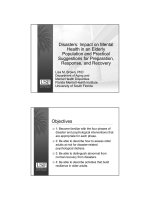
![computer incident response and product security [electronic resource]](https://media.store123doc.com/images/document/14/y/pu/medium_puz1401466136.jpg)

